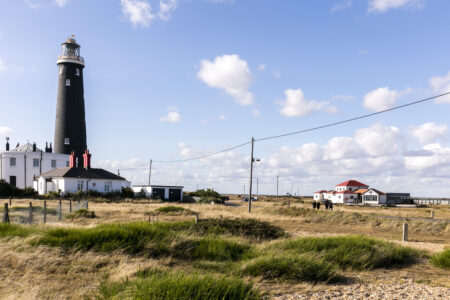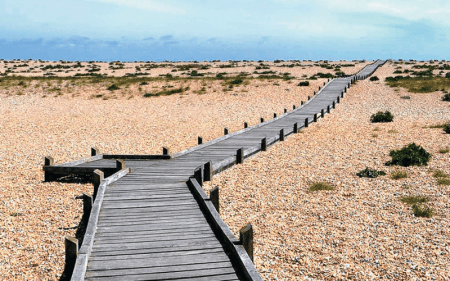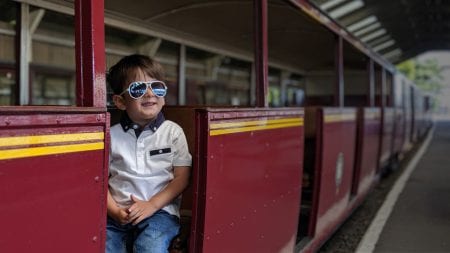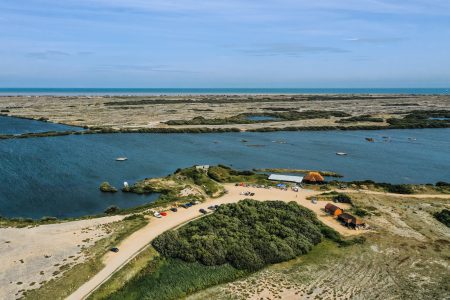ROMNEY, HYTHE & DYMCHURCH RAILWAY
Few days out are more quintessentially British than a trip aboard the Romney, Hythe and Dymchurch Railway (RHDR). Take a step back in time and squeeze in for a journey on the world’s smallest railway.
VIEW FROM A TRAIN
The 13.5 mile stretch of narrow-gauge track runs from Hythe to Dungeness, encompassing small town charm and villages along the way, the open skies and landscape of Romney Marsh and the unique beauty of Dungeness.
Back in the 1920s and 30s, visitors flocked to travel on the little train, just as they do today. During the Second World War the RHDR was pressed into service, running freight trains to carry fuel and taking troops to the cinema, while up until early this century local children would travel to school on board!


With stations at Hythe, Dymchurch, St Mary’s Bay, Romney Warren, New Romney, Romney Sands and Dungeness you can hop on and hop off to explore the area with a Romney Rover day ticket, available at every station on the day of travel.
If you’re going the full Monty, then day returns from Hythe to Dungeness and vice versa and the Romney Rover are available by purchasing online at www.rhdr.org. Pre-booking is available from Hythe to Dungeness for selected reserved compartments, although seats cannot be guaranteed with on the day bookings.
A DREAM COME TRUE…
The RHDR was the culmination of the dreams of Captain J. E. P. Howey — a racing driver, millionaire landowner, former Army officer and miniature railway aficionado and Count Louis Zborowski, a well-known racing driver of his day (famous for owning and racing the Chitty Chitty Bang Bang car).
The Count wanted to build a fully working 15” gauge railway, and Howey quickly got on board with the idea. The Count went ahead and ordered two Pacific locomotives (Green Goddess and Northern Chief), to be designed by the leading model engineer of the day, Henry Greenly and built in Colchester by Davey, Paxman and Co.


Sadly, the Count was killed while racing at Monza in the Italian Grand Prix before the locomotives could even be delivered – leaving Howey with them, and the task of finding somewhere to run them. He commissioned Greenly to help, and it was he that came up with the Romney Marsh.
Officially opened in July 1927, the double track line covered just eight miles, from Hythe to New Romney, but inspired by success Howey extended the line to Dungeness.
With the return of peace in 1945, Hythe to New Romney reopened in 1946 and the single-track Dungeness section followed a year later, with the ribbon cut by none other than Laurel and Hardy.
To ride one of these steam trains across the Marsh is as enjoyable as it ever was – oh, and it’s obligatory for locals to wave to the passengers when the train goes through a level crossing!
PRACTICALITIES
Refreshments and toilets are available at the Hythe, New Romney and Dungeness stations, while New Romney is also home to the Model Railway exhibition and a playpark. Parking and disabled facilities are also on hand. All the stations are within easy reach of local facilities and things to do – to get the full lowdown, go to www.rhdr.org.
Come by car, or check out the local bus services at www.stagecoachbus.com/about/south-east.